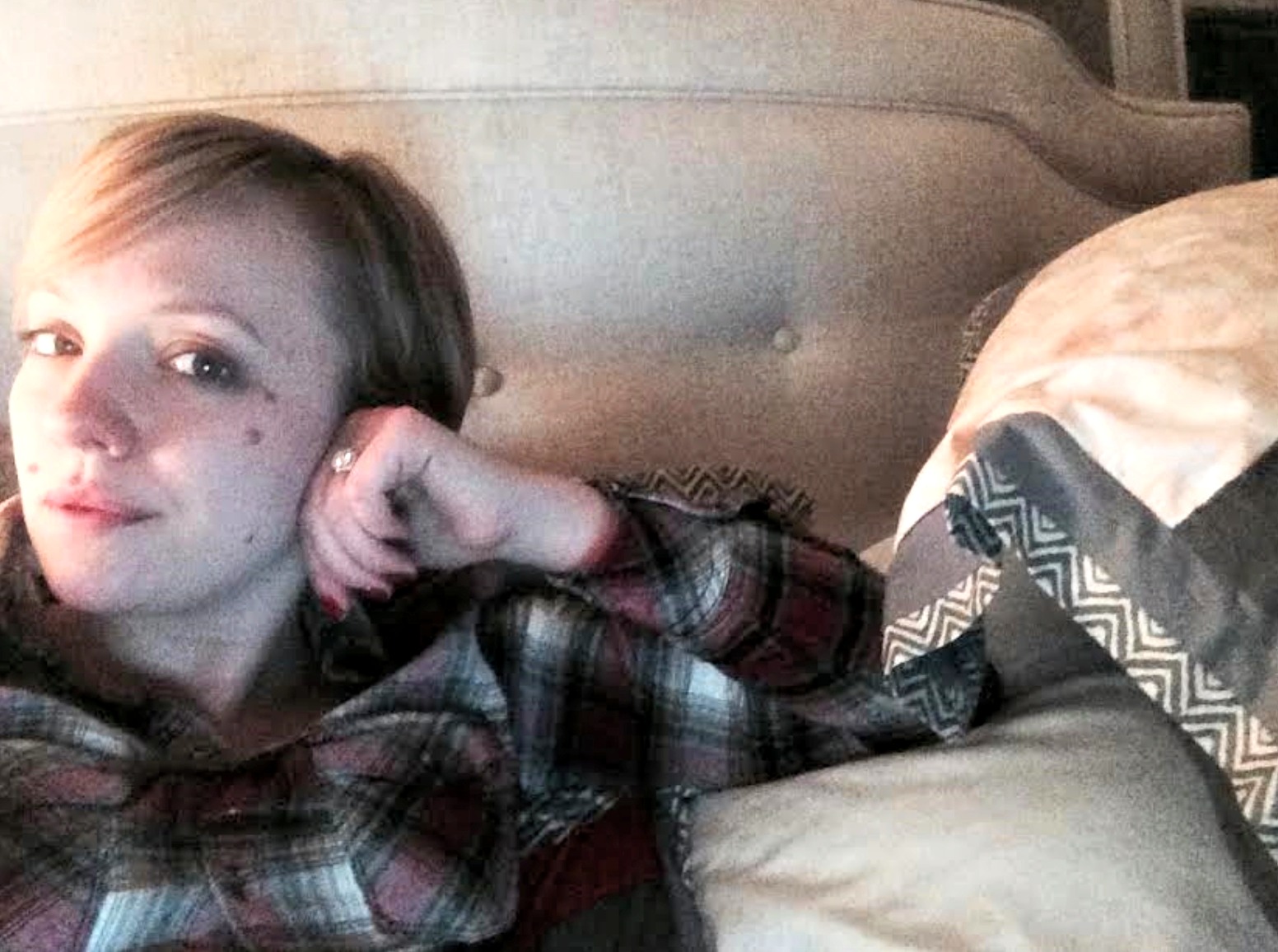By Hey Eleanor’s Molly Mogren
I’ve spent my entire life thinking I was absolutely nuts.
Ever since I was a kid, I’ve been ashamed by an issue I have with sounds. It’s without a doubt the thing I dislike about myself most. If a magical genie gave me three wishes, my first one would be to make the misophonia go away (I’d then wish for a billion dollars and for all pizza to be void of gluten and carbs, but still taste the exact same). From going to the movies to working in an office, this disorder makes daily life challenging.
I have misophonia. I didn’t know it even was an actual thing until a friend read this article in the New York Times and forwarded it to me.
Molly, I think this is you.
Whoa! That is me! I was relieved. Just knowing I had an actual thing was one of the best things I’ve ever heard. Pardon the pun.
I know what you’re thinking: what in the heck is misophonia? The gist: certain noises (in my case chewing, popping gum, humming, typing or clicking with a mouse) cause me panic and rage. And not in a “that’s really annoying” way.
It’s more of a I want to punch you in the face kind of way.
I literally panic if I realize I’ve left the house without ear buds (what if I have to sit by someone slurping at a coffee shop?!). Last week, I speed-walked away while yoga breathing and plugging my ears and shielding my eyes from the guy checking membership cards at Costco. He had the nerve to chew gum with his mouth open.
Like most people with misophonia, I first started experiencing symptoms around age eight. It began with food.
I hated hearing a spoon hit a cereal bowl, the muffled sound of a hand digging around a bowl of popcorn or popping gum. I know most people dislike those noises, but it would cause me to act out. Break things, scream, or avoid eating with my family all together.
Twenty-some years later, I’m still dealing with these same noise problems. In a lot of ways, they’ve gotten worse. My list of triggers continues to grow, and over the past 10 years, it’s moved from just sound, to sound AND sight. For example, seeing someone across the room chewing gum causes me to panic, even if I can’t hear them.
I know! It’s weird! However, 20+ years of this ridiculousness means my coping mechanisms are dialed in.
For example:
I almost always carry headphones, perfect for muffling noises at a coffee shop or a neighbor smacking gum on an airplane. I’d like to point out, if you have misophonia, airports are the absolute worst. Everyone chews gum at the airport.
I almost always have earplugs.
My radio is always on, which helps muffle annoying noises.
I downloaded the White Noise app, which I play to drown out distracting sounds.
I purposely don’t spend time with people who constantly chew gum. I can think of three people right now that I love, but never want to spend time with because of their gum chewing.
I practice deep breathing techniques to calm myself.
I’ve mastered the art of subtly plugging my ears. I might look like I’m just casually resting my head on my hand, but no. I am trying to not hear you.
However, of all the things I do to manage my misophonia, the most helpful was meeting another person who has it. Long story short, the same friend who alerted me to the NYT’s story introduced me to her friend who also has misophonia. She’s normal and awesome and so funny and empathetic.
We live in different cities, but when one of us is having a particularly bad noise day, we will text each other. “My co-worker hasn’t stopped clearing their throat for six days! I’ve already cried twice in the bathroom today!” Just the act of voicing our frustrations is a HUGE relief.
This is precisely why I am sharing my story.
Though misophonia is a neurological disorder, there’s not a lot known about the condition and there is no cure. Some doctors speculate it’s a form of OCD, others believe it stems from some faulty wiring in the brain. What is known is that this disorder is real and it can be very debilitating. Hypnosis, Cognitive Behavioral Therapy and Tinnitus Retraining Therapy can help (full disclosure: haven’t tried any of these), but I also read just talking about it can ease misophonia.
So here it is: I have misophonia. Whew!
I used to be afraid that people would make fun of me, purposely smack their gum, or write me off as hysterical or overly-sensitive.
Today, my fear is different: I don’t want people to feel self-conscious eating/breathing/living around me. I’m already aware that some friends and family do feel self-conscious, and it feels terrible. To be clear, I don’t have a fight-or-flight reaction EVERY time some one is eating around me. If I’m in a place with a lot of stimuli (a busy restaurant or fun party), I don’t notice a lot of the eating noises.
I do, however, always notice the gum.
Always.
I can even hear it over the phone. Not so fun fact: The first thing I do when I walk into a room is scan it for gum chewers. If I see anyone chewing, I do everything in my power to not talk or look at them until they spit out the gum.
I can’t help it. It’s so dumb.
Sharing my story is oddly therapeutic. I’m trying to get over that feeling of shame and embarrassment and I think this a step in the right direction. If you have other coping strategies or treatment ideas, I want to hear them! But if you could spit out your gum before commenting, I’d appreciate it.
Image Credits: Hey Eleanor!

The daughter of a flight attendant and a hippy-turned-real estate developer who toured Europe in a Volkswagen bus, I arrived on earth with an undeniable sense of adventure. From hiking the Antarctic Peninsula, to outrunning a hyena in South Africa and even driving a street-legal monster truck through Des Moines, Iowa—I never turn down an opportunity to do something crazy. I’ve worked as Andrew Zimmern‘s right-hand lady since 2007; we’ve co-written three books together and co-host a weekly podcast called “Go Fork Yourself.” My latest project, Hey Eleanor!, chronicles my year-long journey of tackling one thing that scares me every day. I call Minneapolis home & am shacking up with my fiancé Josh, dog (Patsy) and kitty, Bogart. I love coffee, crossword puzzles and am very good at parallel parking.
You can find Molly here on Pinterest, Twitter, Facebook, and Instagram.



Leave a Reply